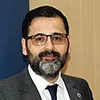- Log in or register to post comments
2022 ISPE Annual Meeting: Convergence and Harmonization Support New Therapies

The regulatory keynote and the Global Regulatory Town Hall panel discussion at the 2022 ISPE Annual Meeting & Expo on 2 November provided insights into regulations and the changing scene with increased cell and gene therapies, and how interactions among regulators and between industry and regulators can help new therapies move through the regulatory process faster. There is also opportunity for regulators to continue to share information through convergence that may make it possible to provide new therapies on a more global basis.
The regulatory keynote was delivered by Peter Marks, MD, PhD, Director, Center for Biologics Evaluation and Research (CBER), US FDA. He presented on “The Potential Impact of Global Convergence on the Availability of Cell and Gene Therapy.” He discussed overcoming barriers to delivering gene therapy, the case for global regulatory convergence, timing for global education and harmonization, and practical next steps.
Marks said that delivering safe and effective gene therapies should be a global priority to alleviate suffering from serious diseases, and global regulatory convergence in high-income countries could help facilitate commercial availability and could make it possible to use gene therapies in low- and middle-income countries.
Individualized medicine offers the opportunity customize medicines that are customized for individuals (same indication, same mode of action) or created products (different indication, different action). Challenges of individualized therapies include manufacturing, nonclinical development, clinical development, and product access. He focused his remarks on manufacturing challenges.
Manufacturing challenges can include the fact that for some therapies, there are few or no models for the diseases; how to deal with a small number of patients and decide if therapy is effective; how to make sure there is product access; and the high cost of products.
He explained that the current commercial viability is to make gene therapies that address populations of moderate sizes of 100 to 1,000 treatments per year. Very small populations sizes can be made, but they are not commercially viable yet, although Marks noted that the set up costs are not too different and CMOs are getting better at these, but the cost is still an issue. He suggested that automation might provide a solution to this challenge, following the model of advanced manufacturing in small molecules, even though biologics are more complicated. Real-time control processes exist now for bioprocesses, artificial intelligence (AI), and “super computers” to maintain process control, so potentially gene therapy production could be automated.
Convergence and More
Marks outlined some concepts that the FDA is thinking about that could help move in this direction, such as developing a “cookbook” to standardize bespoke product development and manufacturing. In appropriate situations, nonclinical data and manufacturing information from one product may be able to be leveraged to another, he said.
Convergence from marketing across high-income countries could help to produce the number of treatments necessary for commercial viability, he suggested. While one country may not have enough patients to treat, multiple countries may be able to do so. Helping to provide the therapies to low- and middle-income countries may be a way to provide treatment where access to other forms of care may not be available.
Global regulatory assistance may be especially useful to the low- and middle-income countries that are not yet able to undertake gene therapies; having a general global regulatory framework could help them to begin, Marks said.
Collaboration globally on gene therapy is important in other contexts as well. Marks said the science of gene therapy is evolving rapidly, and manufacturing technology is lagging. A poorly conceived or improperly manufactured product on the entire field of gene therapy could have a chilling effect, regardless of where the product is produced or administered, he explained.
Potential areas for global convergence could include preclinical study requirements; environmental assessments; manufacturing information such as identity, purity, and potency; and clinical outcomes.
Next steps to consider include considering convergence of regulatory approaches in high-income countries, and encouraging sponsors considering global development programs that include the US to invite other regulators to early-stage meetings. A white paper on regulatory development for low- to middle-income countries, international collaboration on methods for producing gene therapies, and public/private partnerships to support therapies for extremely rare disorders are other steps to consider.
-
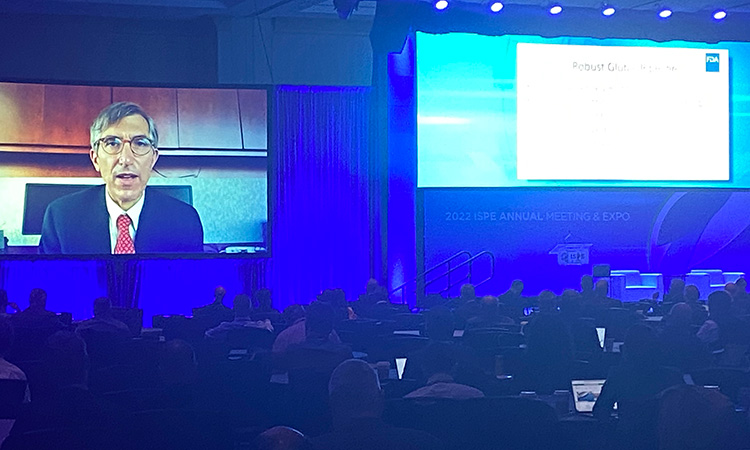 Peter Marks, MD, PhD
Peter Marks, MD, PhD -
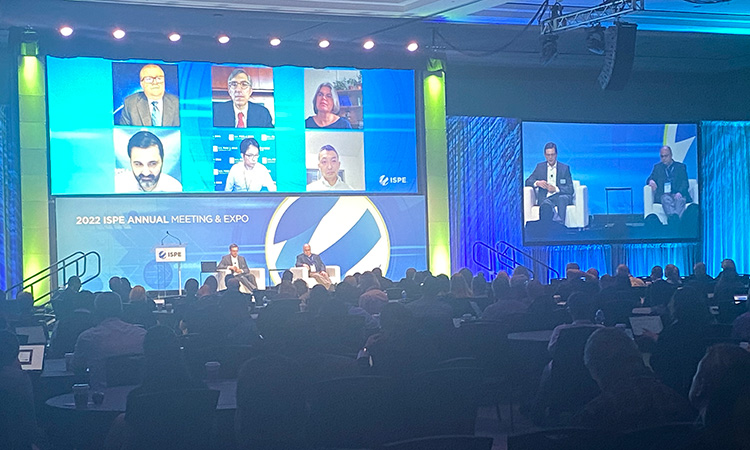 Global Town Hall
Global Town Hall -
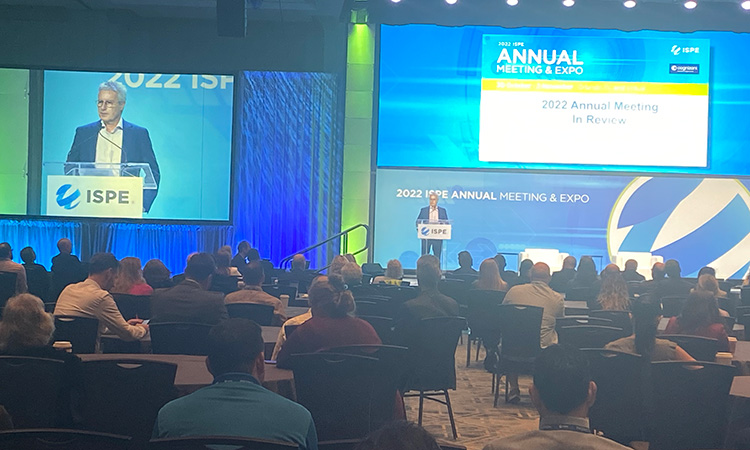 Robert E. Perks
Robert E. Perks -
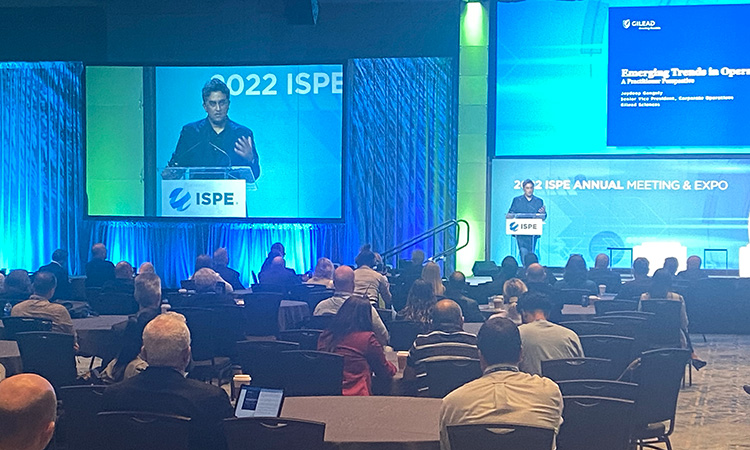 Joydeep Ganguly
Joydeep Ganguly
Global Regulatory Town Hall
One of the most popular sessions at Annual Meeting followed Marks’ keynote: the Global Regulatory Town Hall. This year’s panel featured regulators from multiple countries and regulatory authorities around the world:


Churchward posed questions to the panel that were prepared for consideration ahead of the session and questions raised by attendees. The following is a summary of the questions and highlights of responses and discussion by the panel.
Is joint authority submission/assessment a pathway to acceptance of new modeling methods (e.g., Project ORBIS/ACCESS Consortium)? Even if one national regulatory agency would be willing to embrace these novel methods, what can/should be done to build a more global acceptance?
Health Canada has been working as part of a consortium since 2018, Hamel said. From three applications in the first year, they are now working on eight. He noted many benefits including the chance to interact with other countries, understand their regulations, and try to harmonize as much as possible. “For all the files approved through the access consortium, we all reached the same decision, so we were harmonized,” he said. One set of questions was used by all and shared with the company. He pointed out that shared resources could lead to faster access.
FDA’s Lee said that assessment of postapproval change and hybrid inspection are two areas where collaboration could be helpful. Marks of the FDA noted that harmonization of acceptance of new methods with multiple regulatory authorities may help the industry to move forward to use advanced technologies more rapidly.
Okudaira of PMDA agreed that communications may be a driving force of acceptance of new models, and also establishing international convergence documents may help.
While Anvisa has collaborated, de Aquino acknowledged that sometimes the agency has to decline to participate in favor of its own priorities. He agreed that assessment reports from other authorities could be helpful and Anvisa is working on a framework for this.
The need to share the work was a pandemic learning, and was extremely important for the Czech Republic’s regulatory agency, Hirschlerová said. They have an MRA on inspection pilots, and are trying to share the work in European Union. She noted that many drugs intended for oncology, diabetes, and advanced therapies are assessed centrally in the EMA and trying to harmonize as much as possible, including introducing centralized procedures for generic drugs.
Cuddy of the EMA said that EMA fully supports initiatives where an authority relies on work by other authorities. A 2020 pilot invited external authorities to participate and observe EMA procedures authorizing COVID-19 vaccines and therapeutics. This was successful, he said, and EMA learned that communication is important between regulators. Another learning: rules and engagement are really important in setting concrete procedures. Even quite trivial things like recognizing time differences for inspections are important. He recommends that when thinking about global submissions to multiple regulators, think about timetables; if different timetables between regions, it may impact on availability of inspectors in different regions.
The International Coalition of Medicines Regulatory Authorities (ICMRA) recently initiated two pilots for regulatory convergence for CMC review/inspection. Will your agency participate in one or both pilots? If so, what do you expect to learn? [this was a question submitted by an attendee]
All of the panel members expressed interest in the pilots, although not sure yet if they will participate in one or both; some have already joined. All see such initiatives as an opportunity to learn from other regulators.
Cuddy said EMA will join both the inspection and assessment pilots; divergence and communications are of greatest interest, and not just communications with other regulators. “We’re using these opportunities to communicate with industry in particular, on real submissions we can work on. More important, seeking real manufacturing facilities we can use as guinea pigs.” He encouraged industry members to join the pilot, especially the inspection pilot.
Hamel said Health Canada is interested in the assessments pilot for the chance to collaborate and discuss approaches. Anvisa will also participate in the assessment pilot although unsure how it will participate yet, de Aquino said.
Lee noted that the FDA is already collaborating with EMA and PDA on these issues and will consider what the proposal looks like.
Small differences in a regulator’s control strategy requirements may not seem consequential but the cumulative impact of these small differences in requirements by 100 regulators represents a significant drug shortage risk for a global manufacturer. How can industry and regulators work together to eliminate these differences in requirements?
This is always a difficult challenge, Lee said, and there is no real solution. This is one reason for the ICMRA project: to identify areas of key differences, then evaluate to see whether based on pilot outcome, further improvement may be possible through ICH, PIC/S, or other organizations. He said, “It is not easy to try to untangle everything all at once. If we can identify major differences and understand ROI, that is where we would put the effort into it.”
Industry should highlight differences and present risk analysis to justify that there is no impact on efficacy/safety of products, and work on mutual understanding, de Aquino said, noting that sometimes the requirement is the same but the application is different. “Supplying same quality of products to all countries should be the point. Regulatory convergence is important.”
After COVID-19, Marks said, “we realized having different requirements for controls or manufacturing standards does tend to create barriers that can exacerbate, not remediate, shortages and access to medicines. Coming to harmonization or at least some convergence, even starting with smaller steps, is very attractive.” Small steps would be a good way to build comfort initially, he said.
The success and growth of ICH requires significant compromise among members to agree harmonized standards. Should we refocus on harmonization of core requirements that facilitate global supply (e.g., method of manufacture and analysis), and accept some variability in other areas?
The growth of ICH and the number of stakeholders is great but also presents some challenges, Hirschlerová acknowledged. She agreed that streamlining proposals could be considered, and noted that ICH guidelines now are global and broad, but it is not clear how to streamline. Hamel noted that in GMP areas where consensus is not reached in ICH documents, there may not be information included in a guideline about that area. Convergence is a goal in revisions of ICH, he said.
How do you see pros and cons for starting an ICH guide on cell and gene therapy? [attendee question directed to Marks]
Marks said that with the multiyear process for completing most ICH guidelines, he is a little concerned that with the rate at which cell and gene therapies are evolving, selection of topics to include needs to be considered to avoid including information that is obsolete by the time the guidance is completed. Especially with gene therapy, he said it is important to select areas to focus on initially that are believed to be more durable.
The revision of ICH Q9 is intended to reduce subjectivity in risk management. Will differences remain between regulator and industry approaches that impede adoption of patient-focused, risk-based product development and life-cycle management?
Cuddy explained that there is sometimes a tension in how ICH guidelines are discussed: whether regulators or industry, people want them to be flexible and open, but also want specifics about what can and cannot be done. “That’s a tension that’s always going to be there,” he said, noting that the language as drafted is usually aspirational and not binding. He hopes that the work on ICH Q9 will lead to an understanding of quality risk management (QRM), inspire confidence, and promote more decision making. But policies and guidelines will be needed to build on Q9 by both regulators and industry to support QRM practices.
How can new technologies (e.g., continuous manufacturing for API, cloud-based dossier review, etc.) be adopted more quickly within a globally regulated industry? How can we leverage the concepts in ICH Q9 to propel innovation?
Lee noted the FDA’s support of innovative technologies through its Emerging Technology Program and CBER Advanced Technologies Team (CATT) initiatives to engage the industry early and provide early feedback. He said it is important to have strong communications, and “focus on what we need to do, rather than how” it is done.
Hamel noted that there can be differences between the regulator and applicant assessment of risk, so it is helpful for the applicant to provide examples demonstrating how risk will be managed. “Early engagement is quite important,” he said. This is especially so for new concept technologies with which regulators may not be very familiar. Early communications are very helpful “we can ask questions and have the proper background when the application is filed. Communication is the key piece.”
Regarding regulators and risk models, for the very small patient populations Marks talked about, there may be limited trial data. In the context of QRM, how much uncertainty is acceptable?
Marks said this has been a perennial question. “We’re aided in the fact that effect sizes are reasonably large in cell and gene therapies; even in a nonrandomized trial, it may be that we can feel quite comfortable with reasonably small sample sizes. If one sees doubling in some performance of some measure or 25 or 50 percent increase in survival, those help us here. There may be uncertainty as to long-term safety on these products—we are willing to tolerate a bit more on gene therapy. On other hand, a small risk of, for instance, genotoxicity with a given gene therapy may be very well balanced by the fact that death is almost uniform within a few years. We take it on a case by case basis. The uncertainties we can accept may have to do with magnitude of effect and risk profile.”
Could the panel discuss the very real challenges with regulatory resources, particularly for agencies? What are novel solutions for attracting and retaining assessors and inspectors to support some of the initiatives we have discussed? [question from an attendee]
Cuddy said that prioritizing the work for limited resources of assessors and inspectors, using a risk-based approach with deployment to highest risk areas; working with international partners and leveraging information from those partners; and attracting and training are strategies. Letting potential assessors and inspectors know the challenges regulators face and the contributions they can make can help with the latter, he said.
Digital modeling and use of AI is a rapidly evolving science that affords opportunities to optimize formulations, manufacturing processes, stability assessments, and accurately predict in vivo exposure. How can we close the gap between leading edge modelling capabilities and traditional approaches to data review?
“We have yet to fully leverage what we can do with modeling and AI,” Marks said. For modeling, there is now an understanding of the principles of some protein therapeutics and gene therapies that would allow better understanding, he said. Capacities for AI and analytics in production are underutilized; especially in biologics, keeping process control has been challenging, Marks said. He sees great potential for AI in bioprocesses, and the cost for implementing AI could be repaid by savings in yields.
Lee agreed that it is important to move forward using more data to make decisions. He encouraged attendees to focus on educating assessors and investigators. “Education is the first step.”
Hamel agreed that education is the first step in building regulatory trust in modeling techniques. “To build trust, we need to understand what companies are doing and why.” Early engagement and explaining how the techniques work, will help.
Disclaimer: This article contains an abridged, unofficial summary of regulators’ presentations and discussion during a keynote address and panel session at a conference. This content has not been vetted by any regulatory agency, represents an informal and brief synopsis of regulators’ views, and does not represent official guidance or policy of any regulatory agency or authority.




